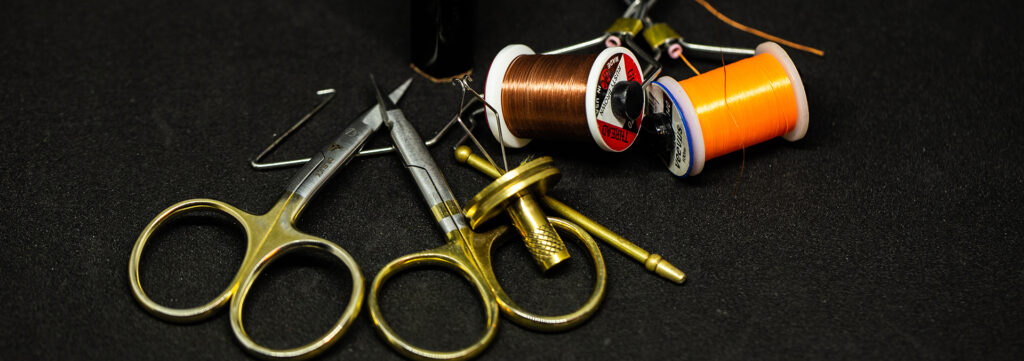Fly-tying does not have to be a complicated hobby to take up. If you have ever strolled through the fly-tying section in a tackle shop, you have likely noticed the abundance of fly-tying equipment, tools, and materials available on the market. Though you could spend a small fortune accumulating every tool there is, here are a few basic items to get started.
One Quality Pair of Tying Scissors
Though there are many different styles of tying scissors for different applications, getting yourself one good pair of scissors will make your time spent at the fly-tying vice much easier. Scissors with longer blades are great for tying larger patterns and trimming deer hair, while those with stout blades are efficient in tying smaller, more delicate bugs. An excellent style of tying scissor that will handle almost any situation is a “bent shaft” scissor. The blades are a very neutral length, and the curved shaft make them easy to pick up off of the desk.
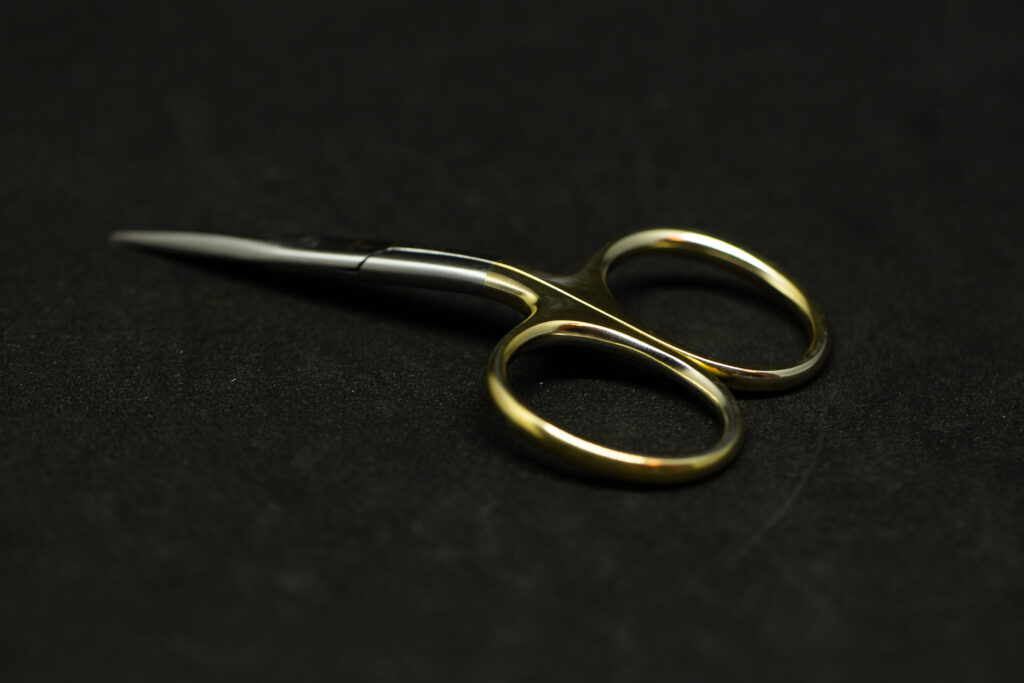
Ceramic Bobbin
If you have ever tied a fly, you will know that there are few things more frustrating than breaking your thread halfway through the process. This often occurs when a nick or burr is present in the tube of the bobbin. Investing a few extra dollars into a bobbin that is lined with smooth ceramic at each end will allow the thread to unwind effortlessly without snagging, and reduce the chance of breakage.
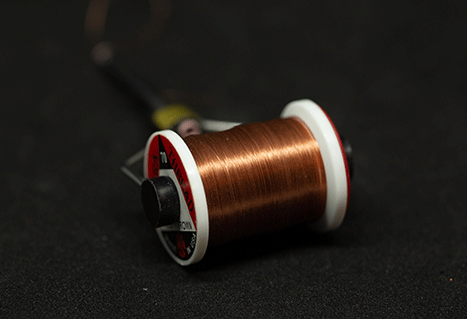
Whip-Finishing Tool
Though you can whip-finish or half-hitch your thread by hand to finish a fly, a whip-finishing tool will make the process much easier. While there are a variety of styles of whip-finishing tools, anything that rotates smoothly, and has a decent gap, will be sufficient.
Dubbing Loop Spinner
The dubbing loop spinner is effective in tightly spinning dubbing, and a variety of other materials, onto a loop of tying thread. Dubbing loop spinners are a very useful tool and do not cost more than a few dollars.
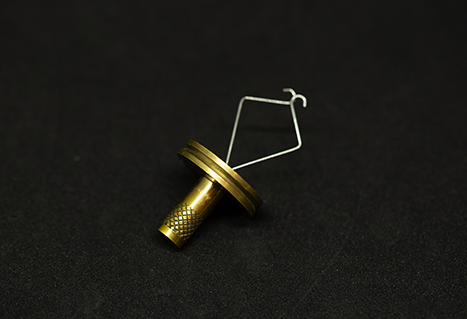
Hair Stacker
When tying fly patterns with deer hair, it is imperative that the tips of the hair fibres line up evenly – something easily done with a hair stacker. Insert a clump of deer or elk hair into the stacker with all the tips facing down, then tap the stacker on a table or hard surface. This will bring all the tips down to the bottom of the stacker, and leave you with a perfectly stacked clump of hair.
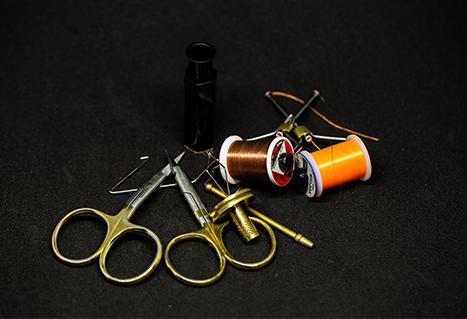
Author: Jordan Oelrich
Photo Credit: Jordan Oelrich
Jordan Oelrich is the owner of Interior Fly Fishing Co. When he’s not guiding, Jordan shares his knowledge for fishing as a writer and fly-tying instructor.
